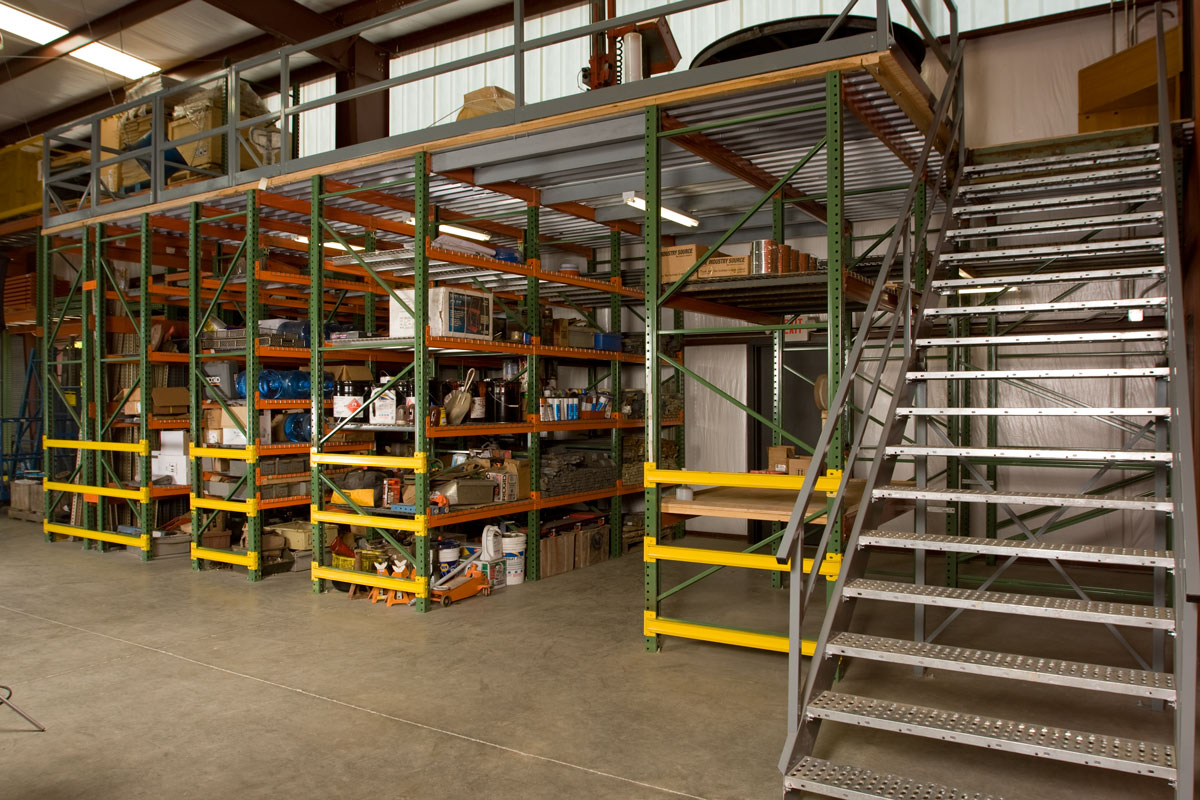
A Mezzanine is an intermediate floor between the main floors of a building. A mezzanine often projects in the form of a balcony. In industrial applications, mezzanines are semi-permanent floor systems typically installed within buildings, built between two permanent original stories. Mezzanines are usually free standing and in most cases can be dismantled and relocated. The mezzanine is often used in warehouses and production areas for storage of tools or materials. The high roof of a warehouse is ideal for a mezzanine. It allows offices to be placed either below or above the mezzanine. Mezzanines are frequently used in industrial operations such as warehousing, distribution, and manufacturing. These facilities have high ceilings, allowing unused space to be utilized within the vertical cube. A freestanding mezzanine is supported by columns, beams and joists. The deck can be made of bar grating that allows light, air and, sprinkler water through. Other types of decking are oval plank decking, corrugated metal with wood decking on top (B-Deck), and corrugated metal with concrete. The mezzanine will need to be accessed by a staircase or multiple staircases to satisfy local building codes. Handrail on the upper deck protects personnel from falling and swing gates can be added to raise pallet loads to the upper levels via a forklift. Freight elevators and belt conveyors can also be added to a mezzanine to help move product up and down. Other types of mezzanines can be rack supported, or shelf supported. Racking and shelving can support the entire upper floor, or they can support catwalk aisle with landings and staircases. Note that all mezzanines should be engineered to comply with weight loads, seismic calculations, and building codes.



